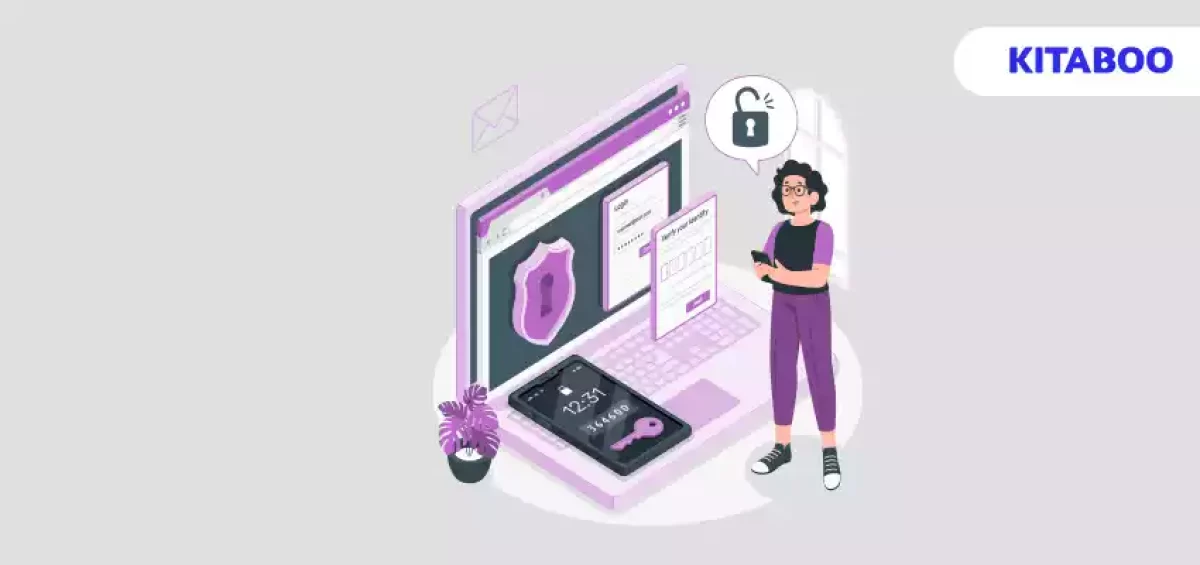Since the rise of the Internet, digital content creators have had to deal with the threat of piracy, which cuts into revenue streams and diverts user engagement.
To help deal with this escalating situation, authors and publishers have turned to implementing DRM systems and mechanisms that allow them to protect their digital assets, control how they are accessed, and better secure their livelihoods.
Today, we will explore the role that data encryption plays in DRM systems and how it helps protect eBooks from piracy.
Table of Contents
II. The Role of Data Encryption in eBook Protection
- Protecting eBook Content
- Preventing Unauthorized Access
- Securing Distribution Channels
- Enhancing Consumer Trust
- Complying with Regulatory Standards
III. The Concept of DRM
IV. Balancing Ethics with Digital Asset Protection
V. The Future of eBook Protection
VI. Conclusion
The Threat of Piracy
The concept of data piracy has been prevalent ever since the mainstream dominance of the Internet. It allows individuals to gain access to content without having to go through legitimate methods. Not only does piracy leave a mark on the hard work of authors and publishers, but it also takes away their control over how their content is accessed and distributed.
Authors and publishers have a right to protect their works from piracy by implementing protective measures. These measures safeguard their copyrighted works, restore the profitable nature of their revenue streams, and allow them to effectively pursue long-term careers in their respective fields.
Digital textbook platforms such as KITABOO allow authors and publishers to deal with the effects of content piracy by safeguarding their digital assets from unauthorized access and distribution. Publishers can encrypt their content to create a secure distribution network.
The Role of Data Encryption in eBook Protection
Data encryption is a method of protecting digital content that can effectively discourage, if not prevent, the rise of piracy. Complex encryption mechanisms are able to disrupt eBook data, which can only be made readable by obtaining the proper decryption tool and accessing it through authorized means.
It allows authors and publishers to accomplish the following goals:
1. Protecting eBook Content
Data encryption software secures eBook content and renders it illegible to unauthorized parties. Encryption algorithms such as AES (Advanced Encryption Standard) allow publishers to encode their eBook files, protecting them from unauthorized interception and discouraging their unauthorized distribution.
2. Preventing Unauthorized Access
3. Securing Distribution Channels
Data encryption helps publishers ensure that their content reaches the intended recipients without the danger of unauthorized interception. Encrypted communication protocols and secure file transfers allow publishers to secure their eBook distribution networks and mitigate the consequences of piracy and unauthorized distribution.
4. Enhancing Consumer Trust
The method of data encryption ensures that customers who access eBooks through verified means receive the content that they paid for, heavily reducing the possibility of data tampering.
Customers are able to more easily trust publishers and distribution networks and know that they are always able to conveniently and legitimately access their content.
5. Complying with Regulatory Standards
Fields that handle sensitive information, such as healthcare, are able to utilize data encryption to facilitate the safe distribution of encrypted eBooks. This helps ensure that publishers and authors are able to comply with regulatory standards.
The Concept of DRM
DRM, or Digital Rights Management software, is a system of protection for digital content, including eBooks, that helps publishers safeguard their content from unauthorized access. As a major component of this system, data encryption is typically the first step that allows creators to take back control over the rampant nature of pirated content.
DRM solutions can implement a variety of complex mechanisms, such as license management systems, that allow publishers to have greater control over how their eBooks are distributed. The integration of DRM technologies with eBook distribution platforms streamlines the process of protecting your eBook.
A digital textbook platform such as KITABOO supports data encryption and allows authors and publishers to create DRM-protected eBooks with a secure cloud-based distribution system.
Balancing Ethics with Digital Asset Protection
Particularly stringent implementations of DRM systems are usually met with concerns and criticism over user restrictions, ultimately punishing users who choose to purchase content in authorized ways more than those who choose to turn to piracy.
This is where DRM systems require a lot of fine-tuning, resulting in a system that protects the interests of publishers and authors while still creating a convenient and efficient user experience for legitimate consumers.
As a first step, data encryption and its validation can be conducted in a way that allows users to seamlessly access content without having to worry about the more complex details.
Implementing systems of usernames and passwords allows customers to efficiently access their content while authorizing their identity to create a well-rounded system. This can be further augmented by systems like multi-factor authentication and single-sign-on mechanisms.
The Future of eBook Protection
As the threat of piracy continues to grow and evolve, systems of eBook protection will continue to advance and handle the new workarounds that come up. Advancements in data encryption will continue to dismantle ways of circumvention and discourage the practice of pirating content.
Advancements in encryption algorithms and DRM technologies will continue to enhance the efficacy of eBook protection measures, with blockchain DRM systems and monitoring tools providing authors and publishers with more ways to keep watch over their digital assets.
Conclusion
The threat of piracy is an ongoing issue and will continue to be one so long as content on the Internet continues to exist. However, publishers and authors have a wide array of tools and systems at their disposal that allow them to protect eBooks from piracy, monitor their legal distribution, and safeguard them from those who threaten their livelihoods.
Digital textbook platforms such as KITABOO allow authors and publishers with ways to implement extensive data encryption and DRM protection for their works. This allows authors and publishers to distribute their content securely without having to worry about revenue and exposure losses derived from the unauthorized distribution of their content.
Want to learn more about how to shield your eBook against piracy? Connect with us now!
Discover How An Ebook Conversion, Publishing & Distribution Platform Can Help You
Kitaboo is a cloud-based content platform to create-publish & securely distribute interactive mobile-ready ebooks.
You May Also Like
-
One-Stop Shop eBook Platform For Publishers & Readers
Blog,Digital Publishing,eBook solution / February 22, 2024








